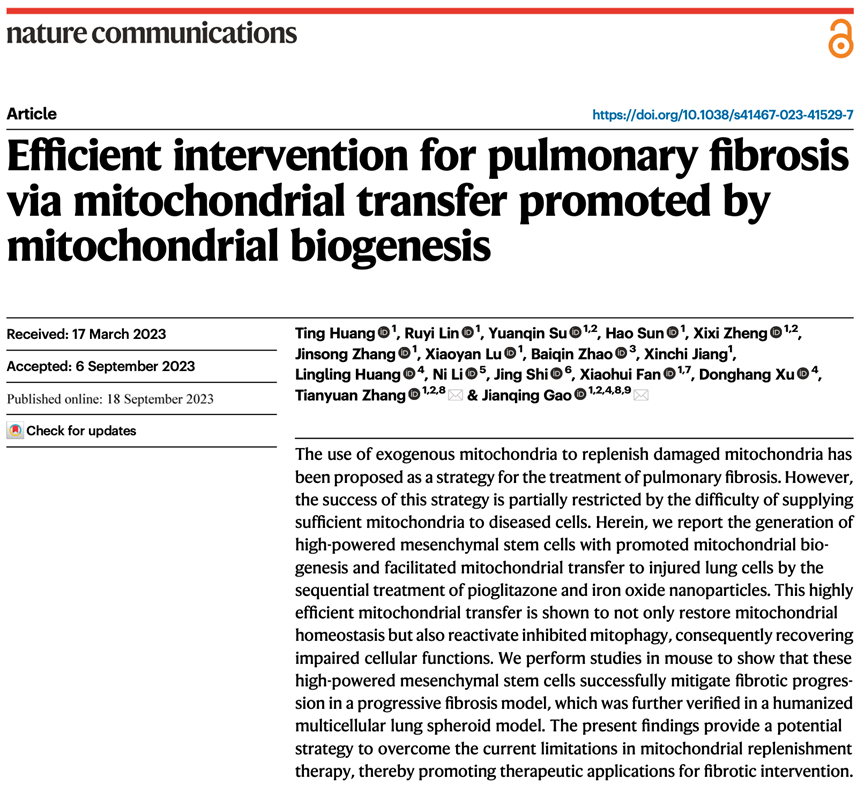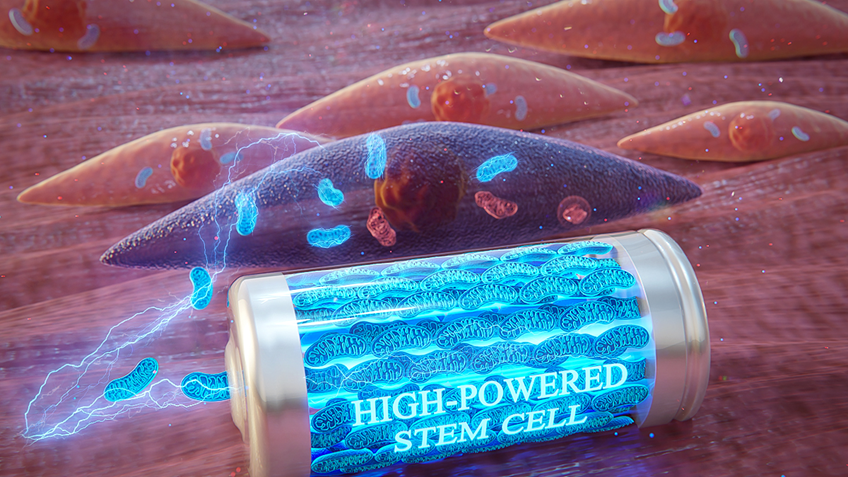
Source: BioValley
Pulmonary fibrosis is a serious interstitial lung disease that leads to progressive loss of lung function and is the most common form of interstitial lung disease in clinical practice. At present, pulmonary fibrosis has become one of the major refractory diseases in the world. Recent studies have pointed out that the damage of mitochondrial function in lung cells is closely related to the occurrence and development of pulmonary fibrosis. Therefore, restoring the mitochondrial function of damaged lung epithelial cells to maintain the homeostasis of intracellular energy metabolism and inhibit overgenerated ROS, thus intervening in the development of fibrosis, has been proposed and is expected to become a new intervention strategy for pulmonary fibrosis.
Professor Gao Jianqing/Researcher Zhang Tianyuan of School of Pharmacy, Zhejiang University constructed the first generation of "stem cell super battery" (V1.0) by using Mesenchymal stem cells (MSC) modified by iron oxide nanoparticles, and promoted the high expression of MSC's gap junction protein through iron oxide nanoparticles. Effective mitochondrial replacement therapy for damaged lung cells was achieved (Science Advances. 2021,7(40):eabj0534. Featured Article). However, although the low energy requirements of MSCS in the undifferentiated state are conducive to their mitochondrial export to other cells, they also limit the number of mitochondria that can be exported, resulting in the termination of this mitochondrial transfer in a short period of time due to mitochondrial depletion within the MSCS, and it is impossible to achieve sustained and efficient mitochondrial delivery to damaged cells. As a result, the effect on advanced pulmonary fibrosis is limited.
In order to overcome this problem, the research team further developed the second generation of "stem cell super battery" (V2.0), through further engineering of MSC, while improving the mitochondrial "capacity" and mitochondrial "output efficiency" of MSC, to achieve efficient and sustained mitochondrial "recharging" of targeted damaged lung cells. The results show that this treatment strategy has a good effect on the mouse fibrosis model that has been developed. Considering the differences between mouse lung tissue and human lung tissue and the self-limiting problem of mouse fibrosis model, the research team further constructed a human lung cell fibrosis model through clinical cooperation, which once again confirmed that the progression of human lung epithelial cells to fibrosis can be effectively slowed by efficient and sustained mitochondrial "charging" of damaged human lung epithelial cells.
The relevant work is "Efficient intervention for pulmonary fibrosis via mitochondrial transfer promoted by mitochondrial. "biogenesis" was published in Nature Communications on September 18, 2023. PhD student Huang Ting is the first author of this paper, and Professor Gao Jianqing and Special Researcher Zhang Dianyuan are the corresponding authors.

The paper was recently selected by Nature Communications as an Editors' Highlights paper. Nature Communications Editors' Highlights Nature Communications editorial published a selection of recent 50 optimal papers (https://www.nature.com/ncomms/editorshighlights).

Professor Gao Jianqing's team has been committed to the construction of biological carrier targeted delivery systems based on stem cells and their derivatives and the treatment of major diseases. In recent years, in Nature Communications, Science Advances, Advanced Materials, Advanced Functional Materials, ACS Nano, The Journal of Controlled Release, Stem Cells Translational Medicine and other journals continue to publish a series of research results, It shows that stem cells and exosomes derived from stem cells have a good application prospect in the treatment of spinal cord injury, stroke, fibrosis and tumor, and some of the results have been advanced to clinical therapeutic research.
The original link: https://www.nature.com/articles/s41467-023-41529-7